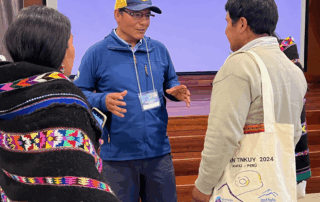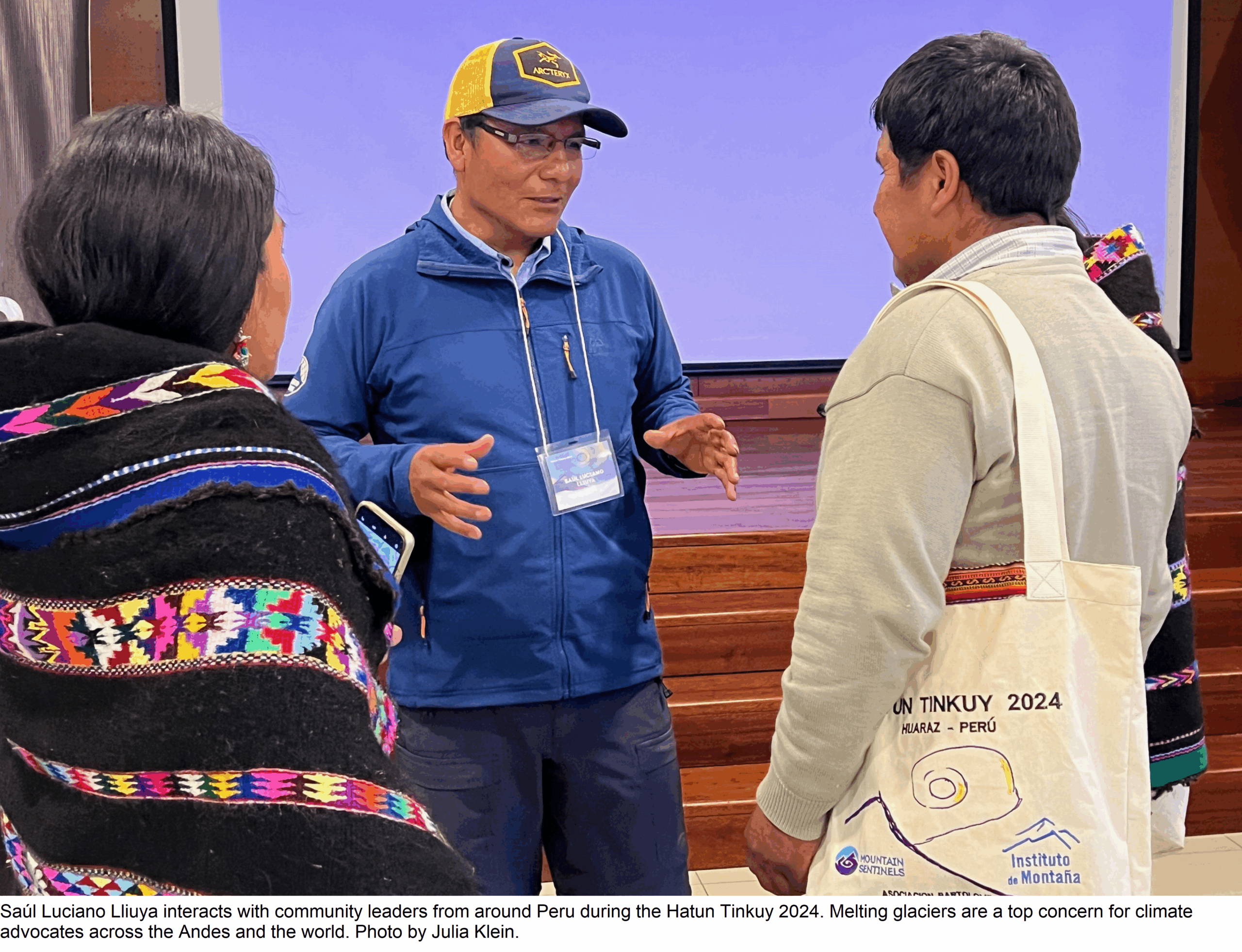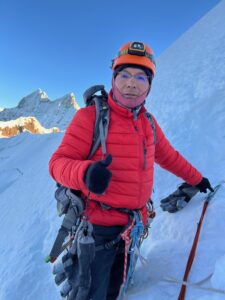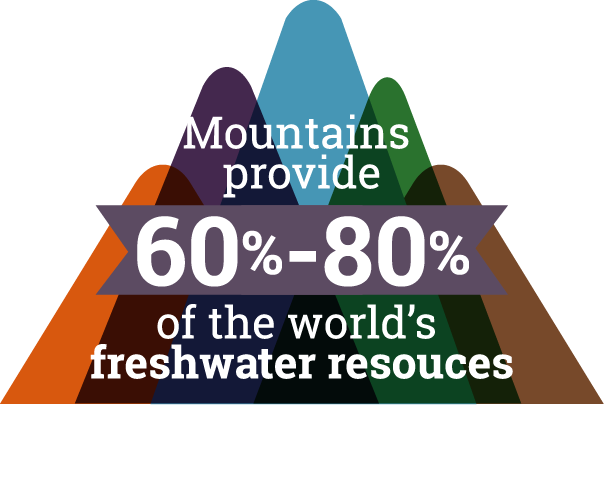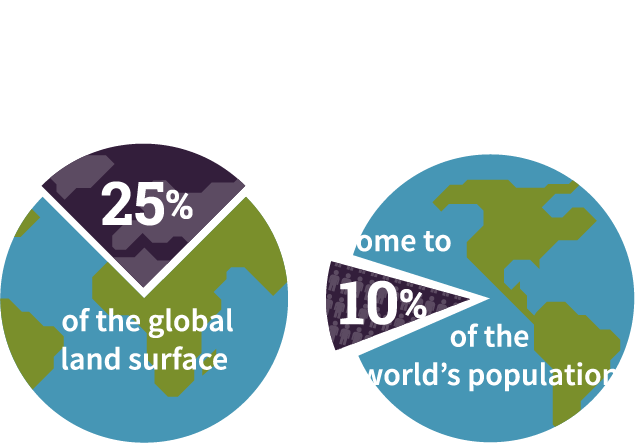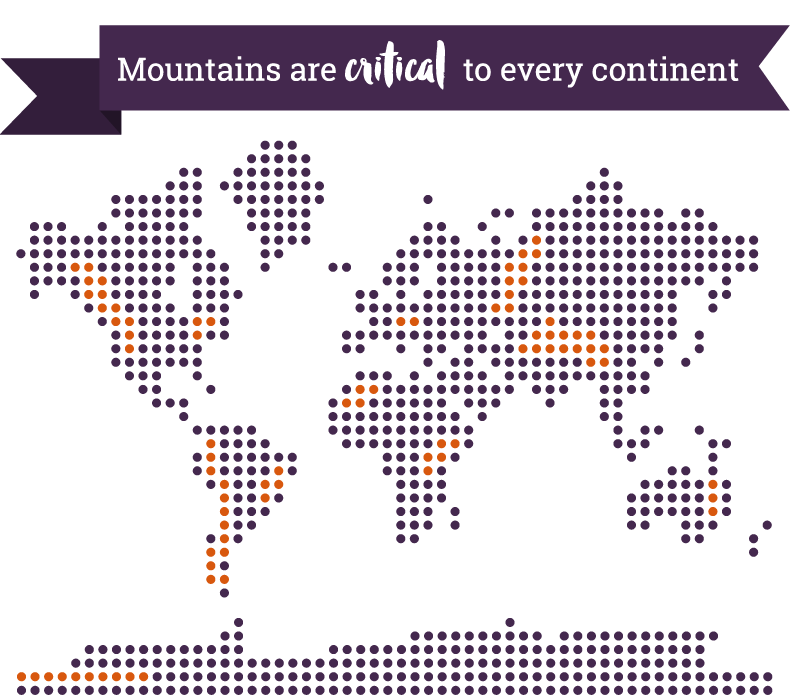






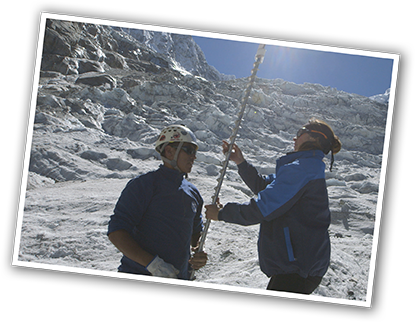
A Mountain of Change in the Andes
Mountain Sentinels2025-09-02T15:00:58-06:00September 2nd, 2025|
On May 28, the Higher Regional Court of Hamm released a verdict establishing a powerful legal precedent. It opens the door to holding companies that [...]
A Mountain of Change in the Andes
On May 28, the Higher Regional Court of Hamm released a verdict establishing a powerful legal precedent. It opens the door to holding companies that emit greenhouse gasses liable for their contribution to climate change impacts – even with thousands of miles between the release site and the affected area.Saúl Luciano Lliuya is a small-scale farmer and mountain guide from Huaraz, Peru, high in the Peruvian Andes. His farm and the city of Huaraz, home to over 120,000 people, face increased risk of flooding caused by glacial retreat associated with rising temperatures. In 2015, he dared to file a lawsuit against RWE, a German utility company with a long history of greenhouse gas emissions due to coal-powered energy production – known as one of the largest CO2 emitters in Europe. The lawsuit asks for a fraction of the cost of a dam that would be constructed to protect the city from flood hazards.
During its ten years in court, the case of Luciano Lliuya v. RWE pushed the boundaries of attribution science to show how corporate emissions have tangible effects on communities and ecosystems. Moreover, it shows how the dedication of one individual can literally change the world. We’ve drawn from the articles below to highlight the key facts of this consequential journey of climate justice.
The Climate Case: Saúl vs RWE website, published by the NGO Germanwatch provides comprehensive information on Saúl, the lawsuit, and its implications. Germanwatch has provided major support to Saul since the inception of the lawsuit over 10 years ago. They are an independent development, environmental, and human rights organisation advocating for sustainable global development based on social equity, respect for nature, and economic stability.
International Commentary and Articles
A commentary from the London School of Economics, “Luciano Lliuya v. RWE: a major step forward for climate justice” (09 July, 2025) notes:
“The verdict in the Luciano Lliuya v. RWE case – first brought by Peruvian farmer Saúl Luciano Lliuya against German energy company RWE 10 years ago – confirms that major greenhouse gas emitters can be held directly liable for the impacts of their emissions anywhere on the globe. While the Higher Court ultimately dismissed the individual claim, finding that the specific flood risk to Luciano Lliuya did not meet the legal threshold, it found that corporate liability for climate-related harm is possible in principle. It therefore gives vulnerable individuals and communities a chance to hold polluters responsible. This marks a vital turning point for climate litigation, offering a glimmer of hope for those who have long suffered from the consequences of corporate emissions but have lacked the legal recourse to demand accountability.
The case was groundbreaking in addressing the global justice dimensions of climate change: many of those who face the worst impacts have made little contribution to emissions while major corporate polluters have not accepted responsibility for climate-related harm. Luciano Lliuya’s argument was rooted in attribution science, which links specific corporate emissions to tangible climate impacts, such as the melting glaciers that threaten his community. By pushing for RWE to take financial responsibility for the protective measures in Huaraz, Peru, Luciano Lliuya sought to hold the company accountable for its historical role in exacerbating global climate change.”
The Conversation article “One lawsuit just helped melt the fossil fuel industry’s defence against being held accountable for climate change” (May 30, 2025) puts the historic power and climate denial commonly practiced by large companies into perspective:
“Millions of people have experienced first-hand the tragic consequences of how burning fossil fuels is overheating our planet beyond recognition. Not just by melting glaciers but fuelling storms, fires and floods. The fossil fuel industry today would never dream of linking its activities to melting glaciers. Instead, it actively denies responsibility for the consequences of extracting and selling some of the most harmful products ever known to humanity.
For the decades we have known about climate science, this narrative has been core to how the fossil fuel industry maintains its social legitimacy: that the industry is not responsible for climate change, but everyone else is through their individual actions.
while the court has now dismissed Lliuya’s specific claim – finding the flood risk to Lliuya’s particular property is not yet sufficiently great – it did confirm that private companies can in principle be held liable for their share in causing climate damages. This finding has major ramifications for the wider legal battle to make fossil fuel companies accountable.
For Lliuya, it is not a matter of if but when – and how bad the flood will be….. He therefore embarked on his lawsuit against RWE with this simple premise: as one of the world’s top greenhouse gas emitters, it should help pay for flood defences to protect Hauraz. The total cost of a new dam would have been US$4 million (£3 million), and Lliuya was demanding that RWE pay 0.47% of that total, which is US$20,000.
This proportional amount was based on a calculation of RWE’s contribution to historical global greenhouse gas emissions – most of which have occurred since the 1990s, long after fossil fuel companies were aware their products would cause dangerous climate change. RWE’s revenues are measured in the tens of billions. It could have accepted Lliuya’s request and paid for not just its share of the cost, but the full cost of flood defences for Huaraz. Yet the company fought tooth and nail to prevent the case getting as far as it did.
For years, fossil fuel companies have operated as if they would not be held responsible for the emissions from their products. But as the world continues to warm, the harmful impacts of climate change and extreme weather will only intensify, resulting in mounting costs – both those we can calculate, such as damage to infrastructure, and those we cannot, like the loss of our loved ones.
With the growing number and accuracy of climate science attribution studies, legal pressure on companies to contribute to climate costs is likely to keep growing…”
Attribution Science and its role in Climate Justice
Several resources mentioned below offer information on attribution science – how emissions are tallied and costs are determined.
- “Carbon majors and the scientific case for climate liability’ (Callahan, C.W., Mankin, J.S. (2025) Carbon majors and the scientific case for climate liability. Nature 640, 893–901. DOI: https://doi.org/10.1038/s41586-025-08751-3)
This Nature article examines the role of science in legal accountability for climate change and looks at the scientific and legal implications of an ‘end-to-end’ attribution that links fossil fuel producers to specific damages from warming. Access the full research article from this page.
- Global trends in climate change litigation: 2025 snapshot (Setzer, J. and Higham, C. (2025) Global Trends in Climate Change Litigation: 2025 Snapshot. London: Grantham Research Institute on Climate Change and the Environment, London School of Economics and Political Science. DOI: 10.21953/LSE.LH46LE9Y8SGI)
This policy publication provides a numerical analysis of how many cases have been filed, where and by whom, and a qualitative assessment of trends and themes in the types of cases filed. Access the policy report and other supplenetary documents.
A Mountain of Change in the Andes
By Mountain Sentinels|2025-09-02T15:00:58-06:00September 2nd, 2025|Home Page Featured, Hot off the Press Featured, Mountain Sentinels Blog, Mountain Sustainability|
On May 28, the Higher Regional Court of Hamm released a verdict establishing a powerful legal precedent. It opens the door to holding companies that emit greenhouse gasses liable for their contribution to climate change [...]
A Mountain of Change in the Andes
On May 28, the Higher Regional Court of Hamm released a verdict establishing a powerful legal precedent. It opens the door to holding companies that emit greenhouse gasses liable for their contribution to climate change impacts – even with thousands of miles between the release site and the affected area.Saúl Luciano Lliuya is a small-scale farmer and mountain guide from Huaraz, Peru, high in the Peruvian Andes. His farm and the city of Huaraz, home to over 120,000 people, face increased risk of flooding caused by glacial retreat associated with rising temperatures. In 2015, he dared to file a lawsuit against RWE, a German utility company with a long history of greenhouse gas emissions due to coal-powered energy production – known as one of the largest CO2 emitters in Europe. The lawsuit asks for a fraction of the cost of a dam that would be constructed to protect the city from flood hazards.
During its ten years in court, the case of Luciano Lliuya v. RWE pushed the boundaries of attribution science to show how corporate emissions have tangible effects on communities and ecosystems. Moreover, it shows how the dedication of one individual can literally change the world. We’ve drawn from the articles below to highlight the key facts of this consequential journey of climate justice.
The Climate Case: Saúl vs RWE website, published by the NGO Germanwatch provides comprehensive information on Saúl, the lawsuit, and its implications. Germanwatch has provided major support to Saul since the inception of the lawsuit over 10 years ago. They are an independent development, environmental, and human rights organisation advocating for sustainable global development based on social equity, respect for nature, and economic stability.
International Commentary and Articles
A commentary from the London School of Economics, “Luciano Lliuya v. RWE: a major step forward for climate justice” (09 July, 2025) notes:
“The verdict in the Luciano Lliuya v. RWE case – first brought by Peruvian farmer Saúl Luciano Lliuya against German energy company RWE 10 years ago – confirms that major greenhouse gas emitters can be held directly liable for the impacts of their emissions anywhere on the globe. While the Higher Court ultimately dismissed the individual claim, finding that the specific flood risk to Luciano Lliuya did not meet the legal threshold, it found that corporate liability for climate-related harm is possible in principle. It therefore gives vulnerable individuals and communities a chance to hold polluters responsible. This marks a vital turning point for climate litigation, offering a glimmer of hope for those who have long suffered from the consequences of corporate emissions but have lacked the legal recourse to demand accountability.
The case was groundbreaking in addressing the global justice dimensions of climate change: many of those who face the worst impacts have made little contribution to emissions while major corporate polluters have not accepted responsibility for climate-related harm. Luciano Lliuya’s argument was rooted in attribution science, which links specific corporate emissions to tangible climate impacts, such as the melting glaciers that threaten his community. By pushing for RWE to take financial responsibility for the protective measures in Huaraz, Peru, Luciano Lliuya sought to hold the company accountable for its historical role in exacerbating global climate change.”
The Conversation article “One lawsuit just helped melt the fossil fuel industry’s defence against being held accountable for climate change” (May 30, 2025) puts the historic power and climate denial commonly practiced by large companies into perspective:
“Millions of people have experienced first-hand the tragic consequences of how burning fossil fuels is overheating our planet beyond recognition. Not just by melting glaciers but fuelling storms, fires and floods. The fossil fuel industry today would never dream of linking its activities to melting glaciers. Instead, it actively denies responsibility for the consequences of extracting and selling some of the most harmful products ever known to humanity.
For the decades we have known about climate science, this narrative has been core to how the fossil fuel industry maintains its social legitimacy: that the industry is not responsible for climate change, but everyone else is through their individual actions.
while the court has now dismissed Lliuya’s specific claim – finding the flood risk to Lliuya’s particular property is not yet sufficiently great – it did confirm that private companies can in principle be held liable for their share in causing climate damages. This finding has major ramifications for the wider legal battle to make fossil fuel companies accountable.
For Lliuya, it is not a matter of if but when – and how bad the flood will be….. He therefore embarked on his lawsuit against RWE with this simple premise: as one of the world’s top greenhouse gas emitters, it should help pay for flood defences to protect Hauraz. The total cost of a new dam would have been US$4 million (£3 million), and Lliuya was demanding that RWE pay 0.47% of that total, which is US$20,000.
This proportional amount was based on a calculation of RWE’s contribution to historical global greenhouse gas emissions – most of which have occurred since the 1990s, long after fossil fuel companies were aware their products would cause dangerous climate change. RWE’s revenues are measured in the tens of billions. It could have accepted Lliuya’s request and paid for not just its share of the cost, but the full cost of flood defences for Huaraz. Yet the company fought tooth and nail to prevent the case getting as far as it did.
For years, fossil fuel companies have operated as if they would not be held responsible for the emissions from their products. But as the world continues to warm, the harmful impacts of climate change and extreme weather will only intensify, resulting in mounting costs – both those we can calculate, such as damage to infrastructure, and those we cannot, like the loss of our loved ones.
With the growing number and accuracy of climate science attribution studies, legal pressure on companies to contribute to climate costs is likely to keep growing…”
Attribution Science and its role in Climate Justice
Several resources mentioned below offer information on attribution science – how emissions are tallied and costs are determined.
- “Carbon majors and the scientific case for climate liability’ (Callahan, C.W., Mankin, J.S. (2025) Carbon majors and the scientific case for climate liability. Nature 640, 893–901. DOI: https://doi.org/10.1038/s41586-025-08751-3)
This Nature article examines the role of science in legal accountability for climate change and looks at the scientific and legal implications of an ‘end-to-end’ attribution that links fossil fuel producers to specific damages from warming. Access the full research article from this page.
- Global trends in climate change litigation: 2025 snapshot (Setzer, J. and Higham, C. (2025) Global Trends in Climate Change Litigation: 2025 Snapshot. London: Grantham Research Institute on Climate Change and the Environment, London School of Economics and Political Science. DOI: 10.21953/LSE.LH46LE9Y8SGI)
This policy publication provides a numerical analysis of how many cases have been filed, where and by whom, and a qualitative assessment of trends and themes in the types of cases filed. Access the policy report and other supplenetary documents.
Join our monthly online community dialogue. Our next meeting is October 23, 9 am MDT (15:00 UTC).


